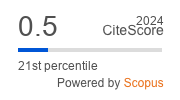Features of the manifestation and course of Crohn’s disease in three brothers
https://doi.org/10.47093/2218-7332.2020.11.3.70-77
Abstract
Hereditary predisposition is the most significant risk factor for Crohn’s disease (CD) in siblings.
Case reports. CD was diagnosed in 3 brothers in a family with 6 children of the same generation: the disease manifested itself in one — at the age of 15 years and in two brothers — at the age of 17 years. In the older brother, CD manifested with acute intestinal obstruction, ileum perforation, diffuse peritonitis; in the middle — with symptoms similar to appendicular infiltrate. Both brothers underwent resection of the terminal ileum, cecum, and part of the ascending colon with the imposition of ileoascendoanastomosis. The younger brother was diagnosed with a non-stricturing, non-penetrating form of CD with a gradual onset and no complications. Among the siblings without CD, two have rheumatoid arthritis and vitiligo.
Discussion. Similar signs of the familial form of CD were young age of manifestation and ileocolonic disease location; distinctive signs — the presence of complications and surgical interventions in only two brothers. A special feature of the case reports is the CD development only in boys and the combination of three different autoimmune diseases in one generation of the family.
About the Authors
A. V. MorkovinaRussian Federation
Anna V. Morkovina, clinical resident, Department of Internal Disease Propaedeutics, Gastroenterology and Hepatology
8/2, Trubetskaya str., Moscow, 119991
+7 (961) 1427449
E. Yu. Yuryeva
Russian Federation
Elena Yu. Yuryeva, Head of the Department of Gastroenterology, Vasilenko Clinic of Propaedeutics of Internal Diseases, Gastroenterology and Hepatology, University Clinical Hospital No. 2
8/2, Trubetskaya str., Moscow, 119991
T. L. Lapina
Russian Federation
Tatiana L. Lapina, Cand. оf Sci. (Medicine), Associate Professor, Department of Internal Diseases Propaedeutics, Gastroenterology and Hepatology
8/2, Trubetskaya str., Moscow, 119991
P. V. Pavlov
Russian Federation
Pavel V. Pavlov, Cand. оf Sci. (Medicine), Head of the Department of Diagnostic and Therapeutic Endoscopy, University Clinical Hospital No. 2
8/2, Trubetskaya str., Moscow, 119991
A. S. Tertychnyy
Russian Federation
Alexander S. Tertychnyy, Dr. of Sci. (Medicine), Professor, Department of Pathological Anatomy named after academician A.I. Strukov
8/2, Trubetskaya str., Moscow, 119991
A. A. Sheptulin
Russian Federation
Arkadiy A. Sheptulin, Dr. of Sci. (Medicine), Professor, Department of Internal Disease Propaedeutics, Gastroenterology and Hepatology
8/2, Trubetskaya str., Moscow, 119991
References
1. 1 Santos M.P.C., Gomes C., Torres J. Familial and Ethnic Risk in Inflammatory Bowel Disease. Ann Gastroenterol. 2018; 31(1): 14–23. https://doi.org/10.20524/aog.2017.0208 PMID: 29333063
2. 2 Trier Moller F.T., Andersen V., Wohlfahrt J., Jess T. Familial risk of inflammatory bowel disease: a population-based cohort study 1977-2011. Am J Gastroenterol. 2015; 110(4): 564–71. https://doi.org/10.1038/ajg.2015.50 PMID: 25803400
3. 3 Torres J., Mehandru S., Colombel J.F., Peyrin-Biroulet L. Crohn’s disease. Lancet. 2017; 389(10080): 1741–55. https://doi.org/10.1016/S0140-6736(16)31711-1 PMID: 27914655
4. 4 Wang M.H., Picco M.F. Crohn’s Disease: Genetics Update. Gastroenterol Clin North Am. 2017; 46(3): 449–61. https://doi.org/10.1016/j.gtc.2017.05.002 PMID: 28838408
5. 5 Silverberg M.S., Satsangi J., Ahmad T., et al. Toward an integrated clinical, molecular and serological classification of inflammatory bowel disease: report of a Working Party of the 2005 Montreal World Congress of Gastroenterology. Can J Gastroenterol. 2005;19 Suppl A:5A–36A. https://doi.org/10.1155/2005/269076 PMID: 16151544
6. 6 Ivashkin V.T., Shelygin Yu.A., Abdulganieva D.I., et al. Klinicheskie rekomendatsii po diagnostike i lecheniyu bolezni Krona u vzroslykh (proekt). [Crohn’s disease clinical recommendations (preliminary version)]. Koloproktologia. 2020; 19(2): 8–38 (In Russian). https://doi.org/10.33878/2073-7556-2020-19-2-8-38
7. 7 Gomollón F., Dignass A., Annese V., et al. 3rd European Evidencebased Consensus on the Diagnosis and Management of Crohn’s Disease 2016: Part 1: Diagnosis and Medical Management. J Crohns Colitis. 2017; 11(1): 3–25. https://doi.org/10.1093/eccojcc/jjw168 PMID: 27660341
8. 8 Carbonnel F., Macaigne G., Beaugerie L., et al. Crohn’s disease severity in familial and sporadic cases. Gut. 1999; 44(1): 91–5. https://doi.org/10.1136/gut.44.1.91 PMID: 9862832
9. 9 Henriksen M., Jahnsen J., Lygren I., et al. IBSEN Study Group Are there any differences in phenotype or disease course between familial and sporadic cases of inflammatory bowel disease? Results of a population-based follow-up study. Am J Gastroenterol. 102(9): 1955–63. PMID: 17573793
10. 10 Ben-Horin S., Avidan B., Yanai H., et al. Familial clustering of Crohn’s disease in Israel: prevalence and association with disease severity. Inflamm Bowel Dis. 2009; 15(2): 171–5. https://doi.org/10.1002/ibd.20740 PMID: 18839423
11. 11 Peeters M., Nevens H., Baert F., et al. Familial aggregation in Crohn’s disease: increased age-adjusted risk and concordance in clinical characteristics. Gastroenterology. 1996; 111(3): 597– 603. https://doi.org/10.1053/gast.1996.v111.pm8780562 PMID: 8780562
12. 12 Annese V., Andreoli A., Astegiano M., et al. Italian Study Group for the Disease of Colon and Rectum Clinical features in familial cases of Crohn’s disease and ulcerative colitis in Italy: a GISC study. Am J Gastroenterol. 2001; 96(10): 2939–45. https://doi.org/10.1016/S0002-9270(01)03247-6 PMID: 11693330
13. 13 Bengtson M.B., Solberg C., Aamodt G., et al. Clustering in Time of Familial IBD Separates Ulcerative Colitis from Crohn’s Disease. Inflamm Bowel Dis. 2009; 15(12): 1867–74. https://doi.org/10.1002/ibd.20978 PMID: 19434721
14.







































